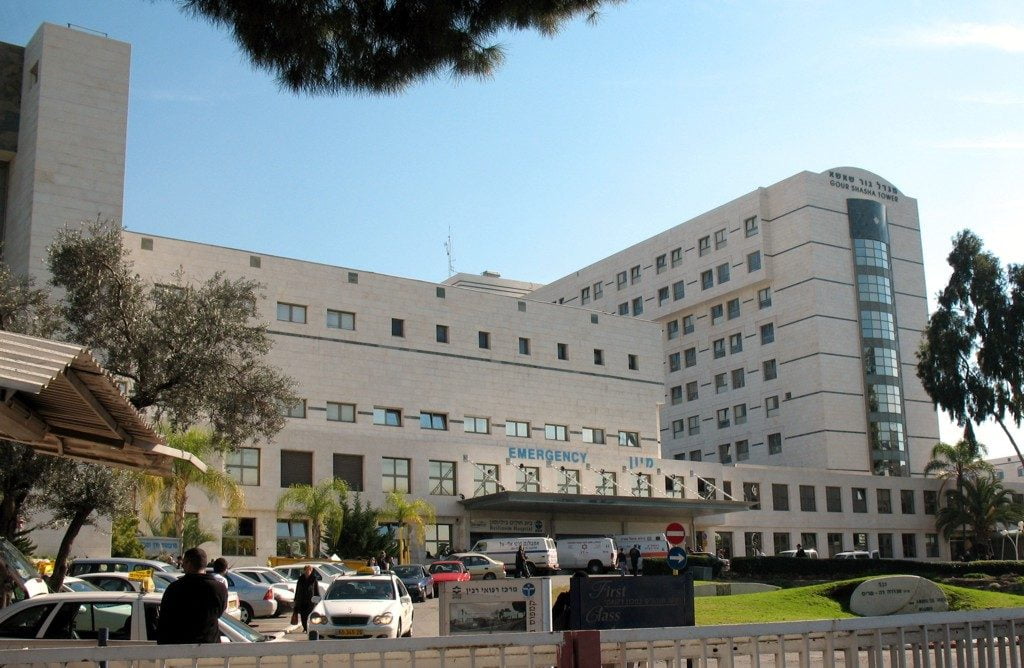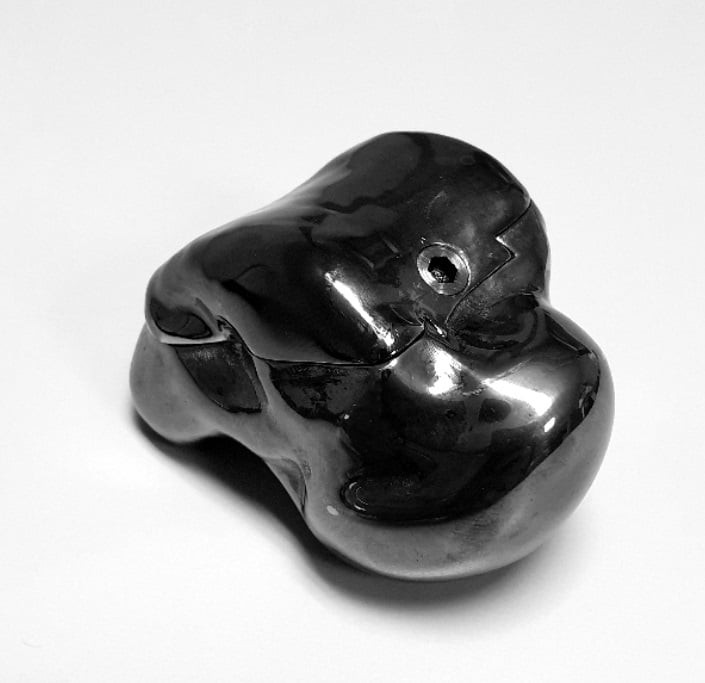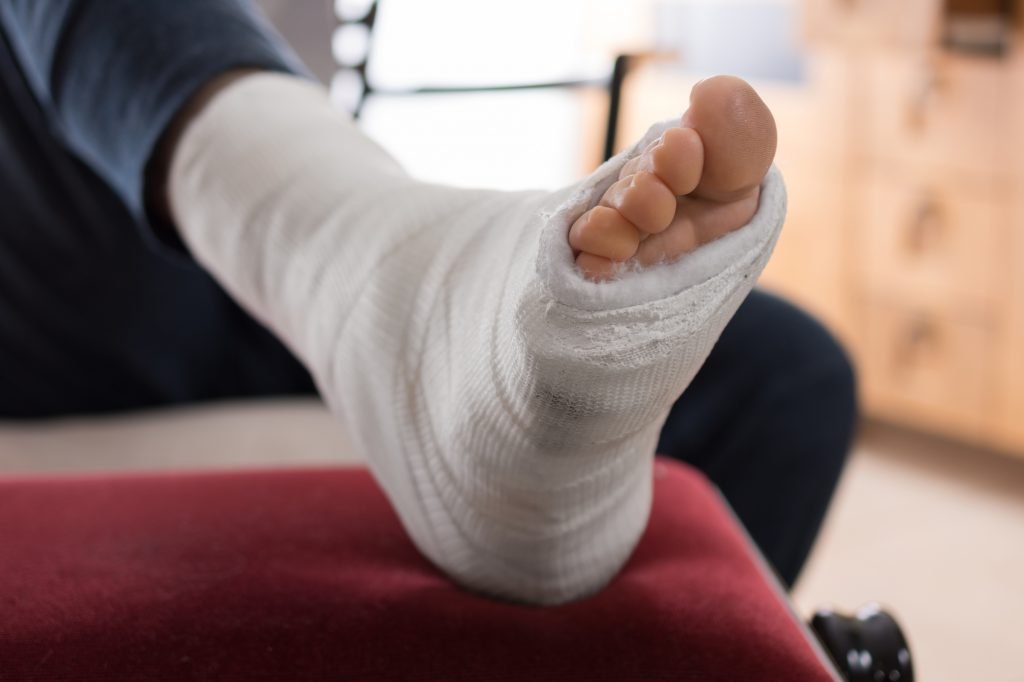Two women who were told they’d never have full ankle movement again following accidents they each suffered are the first Israeli recipients of 3D-printed ankle bones that will allow them to move freely.
Thanks to 3D printing and medical technology, as well as leading doctors from the Department of Orthopedic Surgery and Traumatology at Beilinson Hospital in Petah Tikva (also known as the Rabin Medical Center), the two women, one of them a teen, underwent the country’s first (and second) talus replacement through 3D printing surgeries earlier this month.
Before this revolutionary technology, those who had severe ankle accidents could remain virtually immobilized for life.
SEE ALSO:World’s 1st Patient With Lab-Grown Bone Implant Competes In Israman Triathlon
“When the talus, the main connector between the foot and leg, is destroyed and ankle fusion surgery is performed, this eliminates motion,” Dr. Alon Burg, who co-heads Beilinson’s Foot and Ankle Service, tells NoCamels. “Without the 3D technology, the only other option would have been to fuse their ankle and they wouldn’t have been able to move their ankle properly.”
It was lucky for Tzofit Hod, 16, and Dorit Tal, 56, that they requested a second opinion before going in for foot surgery. Hod fractured her ankle after falling during a Scouts Movement activity; Tal was involved in a motorcycling accident.

Looking at an X-ray, the talus bone looks so small. Its significance, however, is of great importance: it connects the foot to the leg and body and helps transfer weight and pressure across the ankle joint. According to Beilinson’s Department of Orthopedic Surgery and Traumatology, talus injuries are usually a result of car accidents or falls from high places – as was the case for Hod and Tal.
Both women had been told that their only option was the gold standard: ankle fusion surgery. And if they went that route, which is irreversible, it would mean they would not be able to walk as before their injuries.
And then they met Burg.
Burg knew that a handful of fellow orthopedic surgeons at hospitals around the world were performing experimental surgery with a new medical device, a 3D printed talus.
“Medicine is not a local business. We’re always in touch with our colleagues from around the world. It is very important to collaborate, share ideas and learn from other surgeons,” Burg tells NoCamels.
He called Dr. Graham McCollum, a South African foot and ankle orthopedic surgeon, who he had heard speak about this new surgery at an international conference, to hear whether McCollum thought Hod and Tal could benefit from this 3D printed technology to create custom artificial ankle bones. Burg then offered Hod and Tal the opportunity to be Israel’s first recipients of this groundbreaking surgery.
“I was not skeptical about this new technology,” Burg says. “Orthopedic surgeons are used to implants and prosthetic joints, so it’s not a strange concept for us. Every other surgeon I talked to had some questions but nobody was skeptical, it is the next natural step.”
He added, “3D-printed implants are revolutionizing medical care. It is now a go-to tool in our examiner’s toolbox. We have this tool now and can use it in future operations.”
Sign up for our free weekly newsletter
Subscribe
McCollum says he understands why some surgeons may be skeptical about using this technology. “Well, I was skeptical of the first case I did — that is why I followed the patient up for almost two years before implanting the next prosthesis. I saw that he did well and it was a good option for a complex problem where the salvage surgery is a massive fusion and poor mobility,” he tells NoCamels.
McCollum believes 3D technology allows doctors to better treat patients. “[It] is certainly a great medical advancement and here to stay. More implants are becoming custom made to individual patients and complex diseases. In orthopedics, there is a swing to provide implants very specific to individuals,” he writes, in an email exchange between Tel Aviv and Cape Town.
At the beginning of August, McCollum flew in to Israel to perform the surgery alongside Burg.

“I am always keen to collaborate and help patients in other parts of the world. I had not traveled to Israel [before] and I thought this was a great opportunity to develop a network with the surgeons involved there and share our experiences with this technology,” McCollum, of UCT Orthopaedic Department Groote Schuur, tells NoCamels.
Moreover, he says collaboration is key to advancing medical treatments. “The first heart transplant was done in Cape Town in 1967– this only happened because Prof. Chris Barnard traveled to the US to get the experience, and collaborated with the surgeons leading the quest to transplant a human heart. This collaboration led to the successful operation here in Cape Town. So, international collaboration is essential to advance medicine and medical technology,” says McCollum.
In Israel, the surgery was broadcast live to some 30 orthopedic surgeons from the country’s medical centers, who gathered at Beilinson to watch medical history in the making.
McCollum and Burg removed the broken talus and replaced it with an artificial titanium alloy implant, which they had printed on a 3D printer based on a mirror image of the bone in the other leg.
SEE ALSO: First Israeli Patient Gets Startup’s Knee Cartilage-Regrowing Implant
“The purpose of the talus bone replacement surgery is to give patients the ability to walk painlessly and without limitations in ankle flexibility and mobility,” Dr. Steven Velkes, director of Beilinson’s Department of Orthopedic Surgery and Traumatology, said in a press statement. “Thanks to the surgery, Tzofit and Dorit will now be able to walk properly again. We hope to be able to give other people in Israel, who are suffering from a broken ankle, this gift of being able to walk again.”
Burg tells NoCamels that the surgeries were successful.
“The surgeries went well. The patients are home recovering. I look forward to seeing them walking properly,” he says.
Viva Sarah Press is a journalist and speaker. She writes and talks about the creativity and innovation taking place in Israel and beyond. www.vivaspress.com
Related posts

Israeli Medical Technologies That Could Change The World

Harnessing Our Own Bodies For Side Effect-Free Weight Loss

Missing Protein Could Unlock Treatment For Aggressive Lung Cancer




Facebook comments